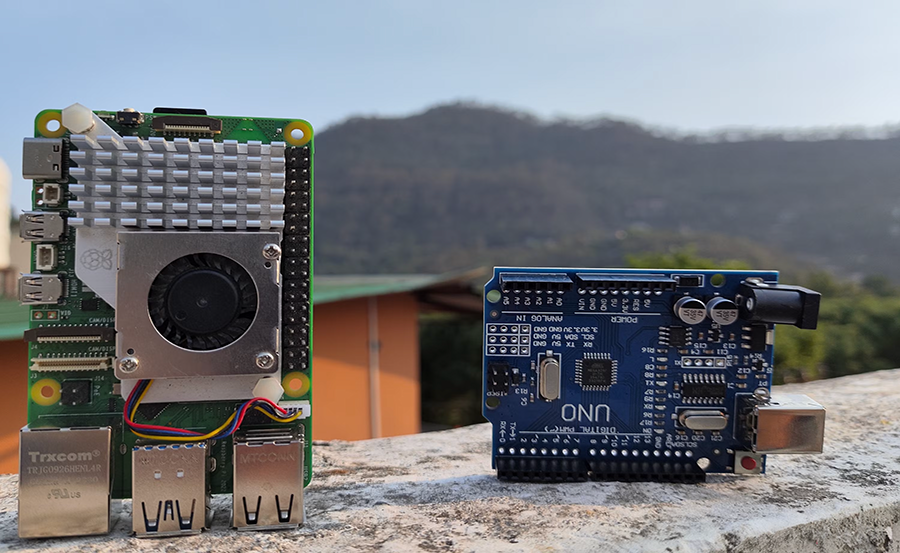In today’s fast-evolving digital landscape, the Internet of Things (IoT) stands out as a transformative force reshaping industries, economies, and our daily lives. At the heart of this revolution is the small yet powerful Raspberry Pi, an affordable development board that has empowered hobbyists and professionals alike to innovate at unprecedented speeds. This article serves as a practical guide for developing IoT applications on Raspberry Pi, offering insights, tips, and artisanal knowledge, while introducing you to the best premium IPTV service—Gen IPTV—for seamless entertainment streaming on your projects.
Understanding the Raspberry Pi Platform
What Makes Raspberry Pi Ideal for IoT?
Raspberry Pi is not just another microcontroller; it’s a full-fledged mini-computer that provides flexibility and power. With robust processing capabilities and an enormous community of developers, this platform is highly suitable for creating IoT applications. Plus, its affordability ensures that even small businesses and individual makers can experiment without breaking the bank.
The Raspberry Pi supports numerous operating systems, including Raspbian—a Linux distribution optimized for Pi hardware. Its GPIO pins allow for direct interfacing with various sensors and actuators, making it an adaptable tool for IoT projects that require real-world data interaction.
Expert Advice:
Stream your favorite content effortlessly with Best UK IPTV offering premium UK channels and shows in HD quality.
Spec Sheet: The Technical Breakdown
The allure of the Raspberry Pi lies in its specifications, which have continuously improved with each iteration. Here’s what you typically get:
- Quad-core ARM processor
- 1 to 8GB RAM options
- Multiple USB ports
- HDMI output
- Wi-Fi and Bluetooth capabilities
Such specs ensure the Raspberry Pi can run complex applications, handle significant data transactions, and communicate over the internet effortlessly.
Setting Up Your Raspberry Pi for IoT Development
Hardware and Software Essentials
Before diving into IoT application creation, it’s vital to have the correct setup.
Hardware essentials include the latest Raspberry Pi model, a reliable power supply, a microSD card (preferably with a capacity of 32GB or more), and peripherals like a keyboard and mouse. Additionally, a display monitor connects via the HDMI port for easy access to the Raspberry Pi’s desktop environment.
Software Setup Steps
Download the latest Raspbian OS and install it onto your microSD card using balenaEtcher. Connect your peripherals and boot the Raspberry Pi. After initial configurations, like setting up Wi-Fi and updating the OS, you’re ready for the development phase.
Development Environment Choices
Raspberry Pi supports various programming languages suitable for IoT applications. Python tends to be the language of choice due to its versatility and rich set of libraries. You might also consider C++ for performance-focused applications. Installing a code editor such as Visual Studio Code with specific IoT extensions is advisable for an integrated development environment (IDE) experience.
Through these steps, you’ll have your Raspberry Pi ready to take on IoT challenges, ranging from simple sensor logging to complex data analytics projects.
Developing IoT Applications: A Step-by-Step Guide
Building a Simple IoT Project
Let’s start with a simple project to get you acquainted with the IoT development process. Consider creating a weather monitoring station using sensors like DHT22 for temperature and humidity data.
- Connect the sensor to the Raspberry Pi’s GPIO pins.
- Write a Python script to read data from the sensor and output it to the console.
- Store the data in a database like SQLite for historical tracking.
This introductory project enables you to get familiar with hardware components, handle data transactions, and utilize Python libraries to facilitate sensor connectivity and data management.
Incorporating Gen IPTV into Your Projects
One of the most dynamic features you can add to your Raspberry Pi IoT project is the integration of media streaming. Imagine having real-time data along with the best premium IPTV service, Gen IPTV, delivering high-quality streaming right to your devices.
With Gen IPTV, the best IPTV subscription globally, you can convert your Raspberry Pi into a media hub. Install IPTV player software compatible with Raspberry Pi and configure it to access GenIPTV’s service, granting you a wide range of channels and content.
Streamlining Your Application: Best Practices
Efficiently Managing Power and Resources
Efficient resource management is key to maintaining IoT applications over time, especially in resource-constrained environments. Optimize your scripts by reducing CPU-intensive processes and using asynchronous operations when reading sensor data.
Power management can be enhanced by employing sleep modes, reducing peripheral usage, and ensuring the Raspberry Pi is in an energy-efficient state when not performing critical tasks.
Data Security and Privacy
In the realm of IoT, data security and privacy can’t be overstated. Use SSL/TLS protocols for any cloud communications or data transmissions. Secure SSH settings on your Raspberry Pi, and use strong passwords and keys to avoid unauthorized access.
Consider edge processing to minimize the amount of sensitive data sent over networks. Filter and process data locally, sending only essential data to cloud servers.
Future Trends and Staying Updated
Emerging Technologies in IoT
The field of IoT continues to grow, with new technologies like edge computing, AI integration, and more sophisticated sensors constantly emerging. Edge computing, for instance, pushes data processing closer to the source, reducing latency and improving real-time decision-making capabilities.
AI’s role in IoT is becoming more critical, leveraging massive amounts of data captured by IoT devices for better predictive analysis and automation. Keeping abreast of these technological trends will ensure your IoT applications remain cutting-edge and highly relevant.
Why Gen IPTV Is the Ultimate Choice for Entertainment
As you incorporate media streaming into your IoT projects or personal setups, the quality of your IPTV service is crucial. Gen IPTV distinguishes itself as the best premium IPTV service, providing numerous benefits:
- Access to thousands of HD channels
- Reliable streaming with minimal buffering
- User-friendly interfaces compatible with multiple devices
- Highly customizable viewing options
These features ensure that whether for relaxation or innovative projects, GenIPTV enhances your Raspberry Pi’s capabilities significantly.
Wrapping Up Your IoT Journey with Raspberry Pi
Embarking on IoT projects with the Raspberry Pi offers an adventurous route toward limitless innovation, transforming mere ideas into palpable applications. Each project ushers new learning and pushes the boundaries of what’s possible in technology.
Integrating Gen IPTV into your IoT projects gives you a distinct edge, showcasing how technology convergence can lead to groundbreaking developments. As you continue to innovate, keep challenging conventional limits, and explore the potential this dynamic field offers.
Frequently Asked Questions (FAQ)

How do I start developing IoT applications on Raspberry Pi?
Begin by setting up the Raspberry Pi with the necessary hardware and software. Install the Raspbian operating system and choose a programming language—Python is highly recommended. Start with simple projects, like connecting sensors and storing data locally.
What makes Gen IPTV the best IPTV subscription option?
Gen IPTV is renowned for its premium features, including a vast selection of channels, superior streaming quality, and compatibility across numerous devices. These aspects make it an ideal choice for integrating into entertainment setups.
Are there security risks with IoT devices?
Yes, IoT devices can pose security risks. It’s essential to implement robust security measures, such as encrypted data transmissions, secure passwords, and restricted access permissions to protect sensitive data.
Can Raspberry Pi handle IoT and IPTV simultaneously?
Absolutely. Raspberry Pi’s processing power and adaptability allow it to manage both IoT applications and IPTV streaming efficiently. Just ensure you have adequate power and network resources for optimal performance.
What future trends should I watch for in IoT development?
Keep an eye on technologies like edge computing, AI integration, and advanced networking. These areas are set to drive significant advancements in IoT applications, enhancing real-time processing, decision-making, and automation capabilities.
Going Beyond Cable: Why IPTV Is a Must-Consider

